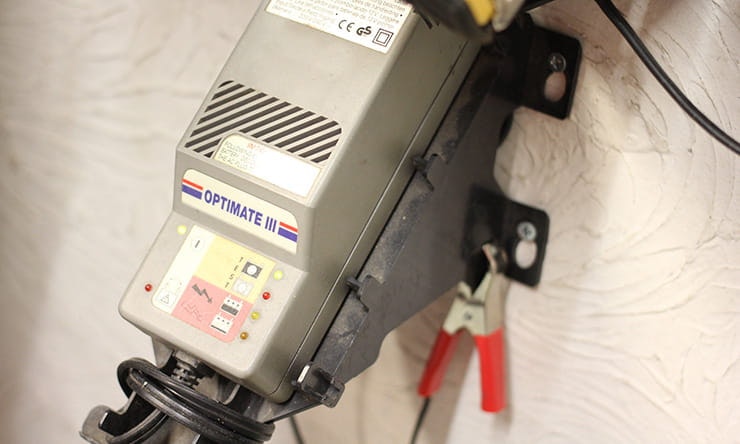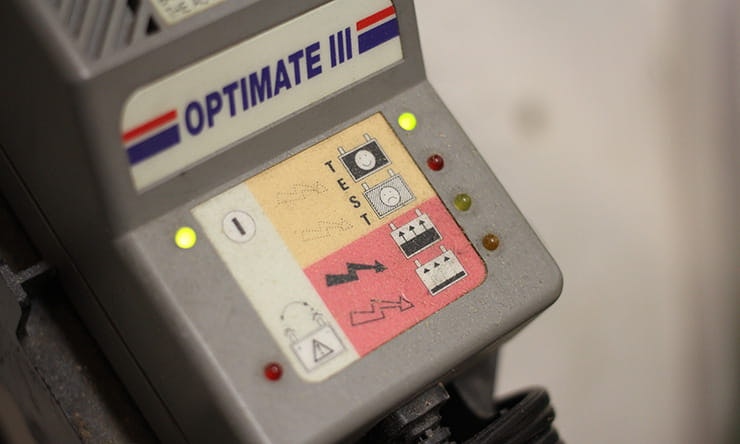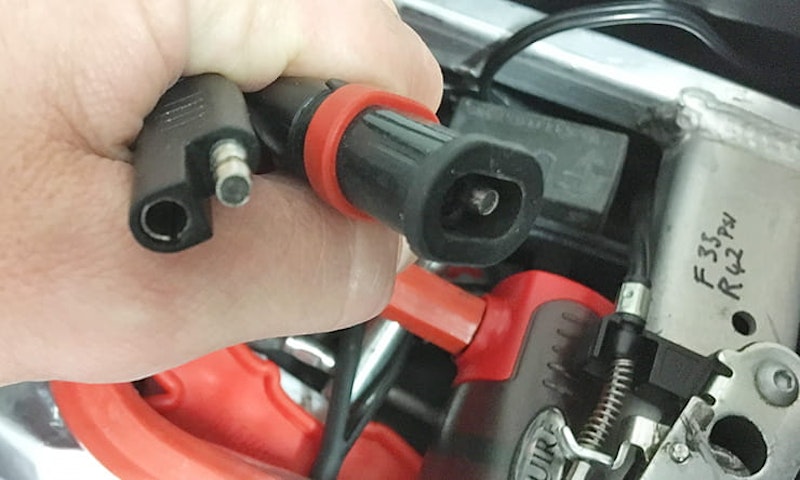Tested: Optimate III motorcycle battery charger review
By John Milbank
Consumer Editor of Bennetts BikeSocial
17.10.2017
Date reviewed: October 2017 | Tested by: John Milbank | Price: £59.99 | www.optimate.co.uk
This charger has been in my garage for more than 15 years now, maintaining everything from the Ducati Monster S4R I used to own, to my daughter’s little electric bike (which I rewired to get rid of the awful charger that came with it as standard).
The Optimate III (now Optimate 3) is an automatic maintenance charger that you can leave plugged into your bike indefinitely, ensuring the battery’s always at its peak. It’ll also recover a deep-discharge battery, something that’s very useful if a lead-acid cell has become sulphated.
I recently worked on a mate’s bike, and tried to charge it using another bike charger I had to hand – without the recovery mode, that one wouldn’t attempt to charge the old cell, whereas the Optimate cycled through and initiated a charge. Unfortunately the battery was too far gone to hold anything after that.
How it works
My old Optimate works in much the same way as the new one – it first tests the battery (and ensures it’s connected the right way around); the pack must have at least 2V in it to activate the Optimate, but from there it’ll go into a ‘desulphation and recovery’ stage, which can pump a relatively high voltage (but small current) into the pack.
Next is the ‘bulk charge stage’, which delivers about 600mA on my old model, and 800mA on the new one.
From there, the device alternates between testing that the battery can hold a charge, and running a maintenance, or ‘float’ charge.
While the relatively low current put out by this charger means it’s intended for motorcycle use, I have used it to charge a hefty car battery when I was stuck – it coped fine, just taking longer of course. It’s not suitable for lithium cells though, as the 20V it puts out in recovery mode can be extremely damaging to this chemistry, and potentially cause a fire. Optimate sells the £62.99 ‘Lithium 0.8’ for these batteries.
I added SAE connectors to my old Optimate, but they come as standard on the new model
My Optimate originally came with a Tamiya-style connector, but I changed that to the SAE version that’s now fitted to Optimates. They come with a clamp connector, so you can charge a battery out of the bike, as well as an eyelet lead, with fuse, that wires direct to your battery.
Because you’re connecting direct to the positive and negative of your bike’s battery, there’s no issue with CAN-bus, though the Optimate 4 comes with a DIN plug and its own special mode that allows CAN-bus-equipped BMWs to be charged through their 12V power socket. On my bikes, I just connect the fly-lead to the battery and leave it under the seat. When I’m popping it on charge, I leave the seat off and plug it in.
Conclusion
With a good-quality battery, there should be little need for an Optimate if you’re riding your bike regularly. But many machines now have a small, but constant draw on the battery; good quality alarms and trackers draw very little, but add everything together, and if your machine’s not ridden for a month or so it can be hard to start. My Ducati always insisted upon a perfect charge to fire up the high-compression V-twin, and there has been at least one occasion that my KTM was very reluctant to kick into life.
The latest version of my charger is smaller and lighter, with a higher output, as well as a global power input (mine’s 220-240V only). I’ve no idea what my Optimate cost when I first screwed it to the wall, but it’s more than earned its keep over the years, and continues to do so…
Share on social media:


